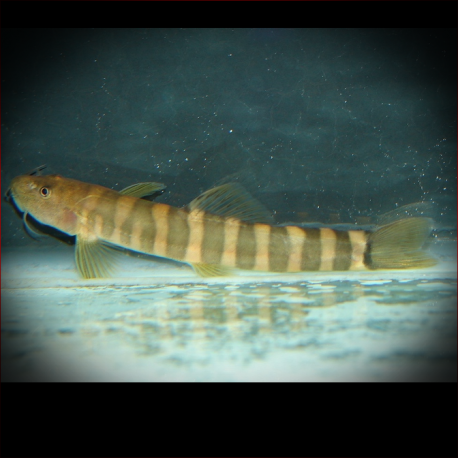More info
Datasheet
| Minimum Tank Size | 80 litres / 21.13 US gallons |
| Maximum Size | 7.5cm / 2.95inches |
| Temperature | 21°C / 69.80°F - 26°C / 78.80°F |
| Hardness | 2.02dgH / 36ppm - 12.05dgH / 215ppm |
| pH | 6.0-7.5 |
General Description
The Schistura Alticrista species is distinguishable by its vertically-orientated adipose crests on the ventral and dorsal midlines of the caudal peduncle and a unique color pattern. It features dark brown bars approximately as wide as the paler interspaces, with a black bar across the entire caudal-fin base and notable black spots at the base of specific fin rays. The species is closely related to S. disparizona and S. callidora within the genus.
Aquarium Setup
To house Schistura Alticrista, it is recommended to mimic a flowing stream environment. Utilize a tank with a substrate of rocks, sand, and fine gravel, complemented by water-worn boulders and driftwood. Incorporate hardy aquatic plants like Microsorum or Anubias spp., and establish a territory with caves and sheltered spots. Maintain a high level of dissolved oxygen and mild water movement, ensuring cleanliness and conducting regular water changes of 30-50% tank volume weekly.
Behaviour
While not overtly aggressive, Schistura Alticrista requires cautious tankmate selection due to its specialized needs. Avoid pairing them with slow-moving or long-finned species susceptible to nipped fins. Ideal companions include Danio, Devario, and Rasbora spp., along with current-loving loaches and benthic cyprinids. Intraspecies groups can be maintained in well-structured tanks with minimal conspecific aggression.
Feeding and Diet
Being omnivorous, Schistura Alticrista primarily feeds on small insects, worms, crustaceans, and zooplankton, with minimal plant matter consumption. In aquariums, feed a varied diet including live and frozen foods like Daphnia and bloodworms to enhance coloration and health. Avoid relying solely on dried foods for their nutrition.
Reproduction & Dimorphism
There is no reported information on the reproductive habits of Schistura Alticrista. Mature males typically exhibit enlarged "cheeks," while females are slightly heavier-bodied, particularly when carrying eggs. Sexual dimorphism becomes more noticeable as the fish reach maturity.
Habitat and Distribution
S. Alticrista originates from the Nam Mae Yuan river basin in Thailand, particularly within the Salween drainage system. It is prevalent in clear, oxygen-rich headwater streams with rocky substrates and forest shading. The species may also venture into Myanmar through the Salween river.

